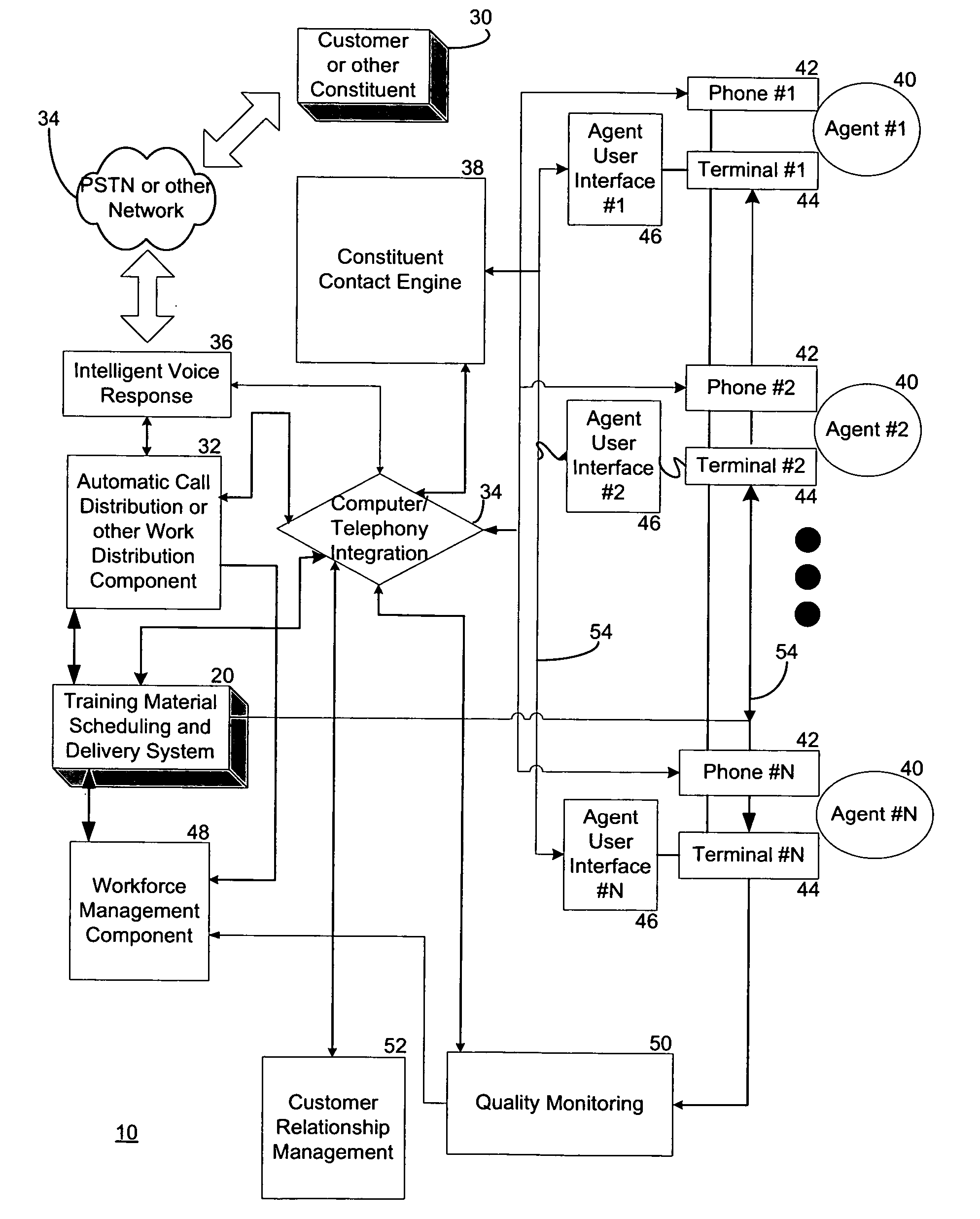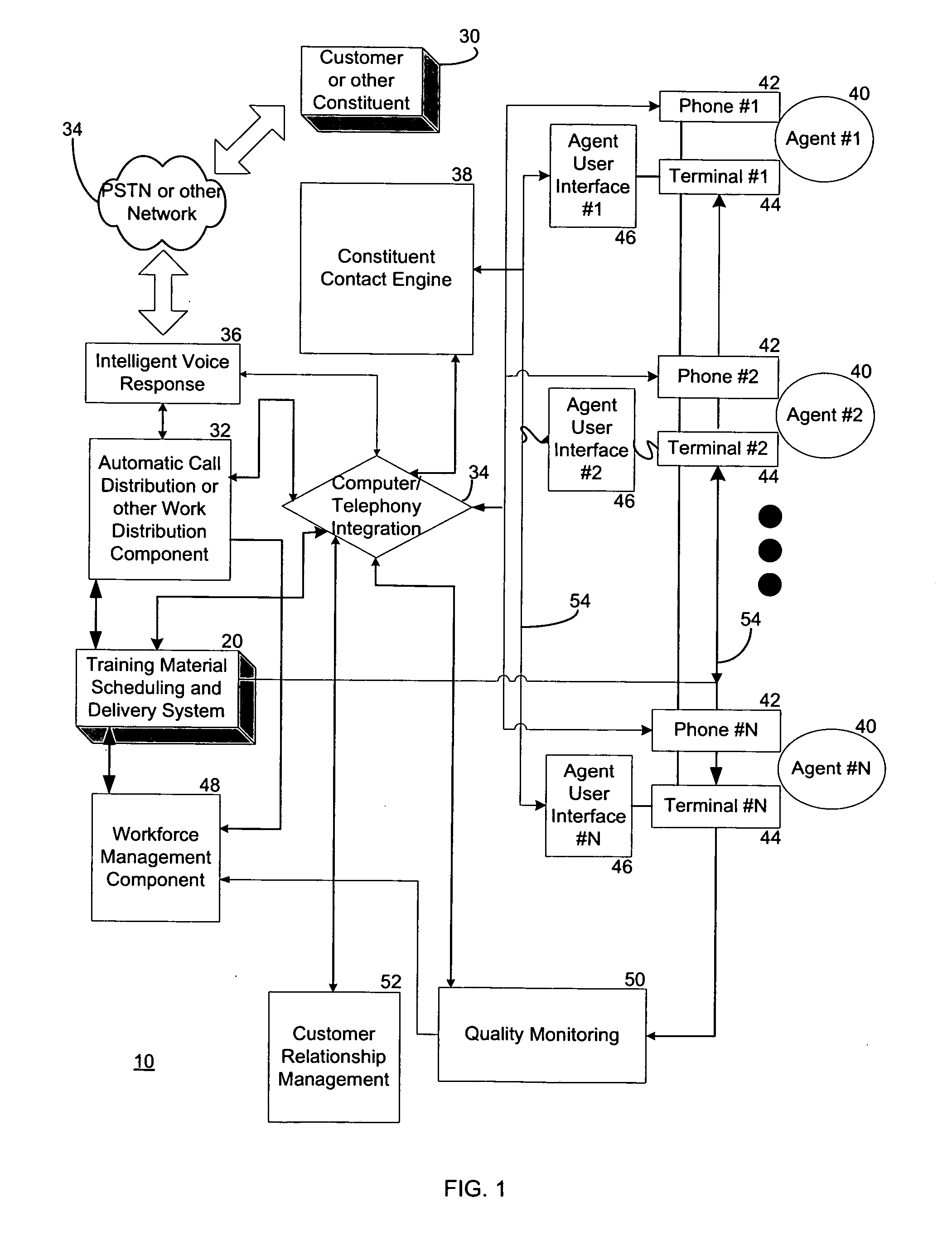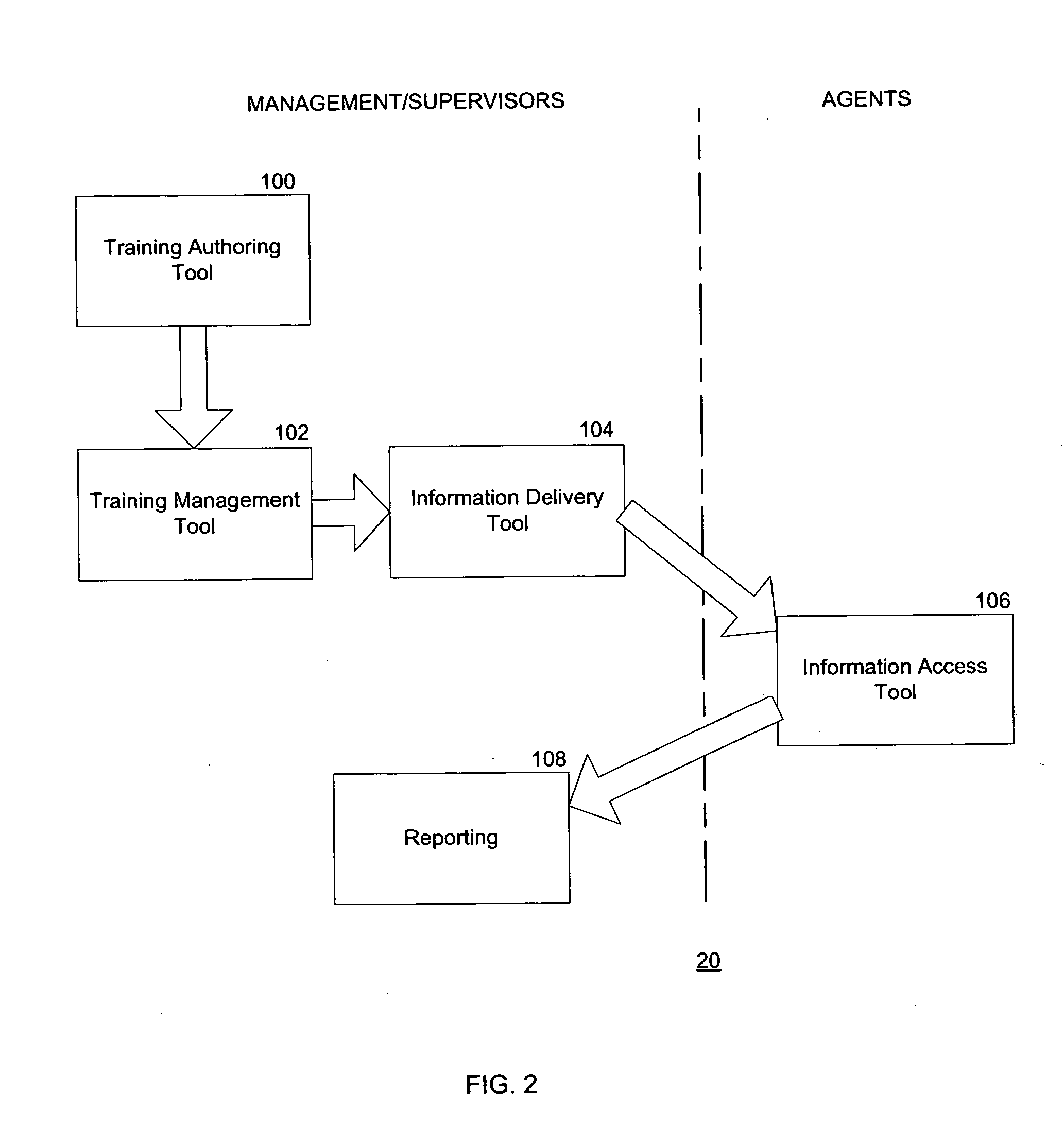Method and system for prioritizing performance interventions
a performance intervention and performance technology, applied in the field of enhancing the performance of the contact center workforce, can solve the problems of inability to centralized management and control of the contact center, one-size-fits-all approach often fails to provide a sufficient level of guidance, and conventional self-directed training is usually not amenable to centralized management and control. , to achieve the effect of improving or enhancing the performance, effectiveness or efficiency of one or, less time sensitiv
- Summary
- Abstract
- Description
- Claims
- Application Information
AI Technical Summary
Benefits of technology
Problems solved by technology
Method used
Image
Examples
Embodiment Construction
[0050] Exemplary embodiments of the present invention support managing the selection, prioritization, or sequencing of performance interventions for delivery to agents of a contact center or to another member of a contact center's workforce. Performance interventions can be training sessions, courses, tips, information, reprimands, coaching content, warnings, or other items intended to enhance workplace performance or efficiency. A performance intervention could be a communication delivered to an agent with the intent to enhance the performance, proficiency, and / or effectiveness of that agent, for example. The performance interventions can be organized, sequenced, ranked or prioritized in a lineup, an ordered list, or a queue, that specifies, outlines, or describes the sequence that the workforce member should receive the performance interventions. The agent might select a training course from the top of the list, for example. The performance interventions can be sequenced according...
PUM
 Login to View More
Login to View More Abstract
Description
Claims
Application Information
 Login to View More
Login to View More - R&D
- Intellectual Property
- Life Sciences
- Materials
- Tech Scout
- Unparalleled Data Quality
- Higher Quality Content
- 60% Fewer Hallucinations
Browse by: Latest US Patents, China's latest patents, Technical Efficacy Thesaurus, Application Domain, Technology Topic, Popular Technical Reports.
© 2025 PatSnap. All rights reserved.Legal|Privacy policy|Modern Slavery Act Transparency Statement|Sitemap|About US| Contact US: help@patsnap.com



